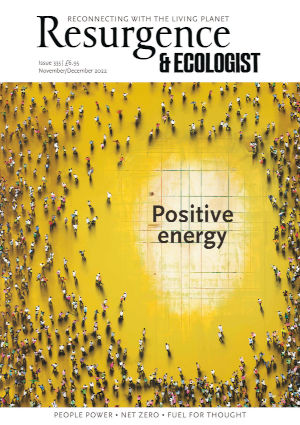Many of us, when we encounter natural or industrial sounds in the world, likely regard them as incidental, that the mating songs of birds or the growl of aircraft engines are secondary to the creative or polluting activities from which they arise. But in Sounds Wild and Broken, David George Haskell invites us to listen afresh and engage with a planet composed of sounds, recognising the experience as a “generative force”.
Over the course of the book, Haskell modulates between personal accounts, scientific observations and political analyses, mapping out a rich journey from the sonic origins of the Earth and its species, to arrive at a powerful thesis on the value of attentive listening. His text is informative, but its strength lies in Haskell’s challenging of our assumptions. For example, in examining the relationship between sexuality and song in species such as frogs, he observes how “nearly all field studies of song assign sex to individuals with the untested dualistic and heteronormative assumptions that all animals exist in either male or female bodies, and that all pairs are between males and females. Neither assumption is true.” Through the lens of sound, he uncovers how “we project onto ‘Nature’ our preconceptions” and biases.
Haskell’s specificity in describing the songs and calls of nonhuman species might initially feel overly detailed, but the depth of these descriptions embeds in the reader a sense of awe at the complexity of the Earth’s sonic environments. So when Haskell later writes about his experience of attending a classical orchestral concert in New York City, observing how “the air comes alive with the vibrating of plant and animal parts,” we hear it not as a romanticised notion about ‘the natural world’, but as a poignant reflection upon the ecological foundations that underlie western classical music. When he then adds that we also hear in these orchestral instruments “the legacy of forced occupation and resource extraction” – how these instruments’ core materials often originate from colonial trade routes – he powerfully shifts the frame again.
Haskell is a US-based biologist and academic, and in many ways his perspective is shaped by that cultural context. That said, he brings into his text voices besides his own, and draws a powerful parallel between the listening he invites us to show to nonhuman species, and the solidarity and attentive listening that he urges us to show to Indigenous communities, not just the custodians of lands that have been colonised in the past, but also those whose cultures remain “under sustained attack”. Of course, these modes of listening are different, but Haskell unpacks how deforestation and destruction by nation-states and corporations suppresses both the sonic diversity of species and the voices of Indigenous peoples – “silencing”, he writes, “is strategy.” Importantly, he adds this crucial nuance, and perhaps a warning to well-intentioned NGOs and activists: “Not all forms of listening are equally open to the voices of the oppressed. Our modes of listening must remedy injustices and not reinforce them.”
Haskell’s book is ambitious in both its scope and its argument. He observes: “A complete inventory of all the species in any landscape is impossible… Conservationists therefore focus their efforts, hoping that samples of a few species will reveal patterns relevant to all.” In a similar way, he presents us with patterns that might suggest to us new ways of listening, and the accompanying sound samples provided on his website offer an opportunity to move beyond the page. However, it is Haskell’s observations of how sound is a powerful creative force, and central to our current ecological crisis, that encourage us out into a politically reverberant world. Despite the challenges we face, his observation early on in the book continues to resonate, perhaps offering a sense of hope: “Yes, there is order in the sounds of a forest or a seashore, revealing the physical and ecological laws of the world. But there is also unpredictable creativity in Nature’s work.”







